
Hanoi University of Science and Technology
Faculty of Applied mathematics and informatics
Advanced Training Program
Lecture on
Algebra
Assoc. Prof. Dr. Nguyen Thieu Huy
Hanoi 2008

Nguyen Thieu Huy, Lecture on Algebra
1
Preface
This Lecture on Algebra is written for students of Advanced Training Programs of
Mechatronics (from California State University –CSU Chico) and Material Science (from
University of Illinois- UIUC). When preparing the manuscript of this lecture, we have to
combine the two syllabuses of two courses on Algebra of the two programs (Math 031 of
CSU Chico and Math 225 of UIUC). There are some differences between the two syllabuses,
e.g., there is no module of algebraic structures and complex numbers in Math 225, and no
module of orthogonal projections and least square approximations in Math 031, etc.
Therefore, for sake of completeness, this lecture provides all the modules of knowledge
which are given in both syllabuses. Students will be introduced to the theory and applications
of matrices and systems of linear equations, vector spaces, linear transformations,
eigenvalue problems, Euclidean spaces, orthogonal projections and least square
approximations, as they arise, for instance, from electrical networks, frameworks in
mechanics, processes in statistics and linear models, systems of linear differential equations
and so on. The lecture is organized in such a way that the students can comprehend the most
useful knowledge of linear algebra and its applications to engineering problems.
We would like to thank Prof. Tran Viet Dung for his careful reading of the manuscript. His
comments and remarks lead to better appearance of this lecture. We also thank Dr. Nguyen
Huu Tien, Dr. Tran Xuan Tiep and all the lecturers of Faculty of Applied Mathematics and
Informatics for their inspiration and support during the preparation of the lecture.
Hanoi, October 20, 2008
Assoc. Prof. Dr. Nguyen Thieu Huy

Nguyen Thieu Huy, Lecture on Algebra
2
Contents
Chapter 1: Sets ................................................................................... 4
I. Concepts and basic operations ........................................................................................... 4
II. Set equalities .................................................................................................................... 7
III. Cartesian products ........................................................................................................... 8
Chapter 2: Mappings ......................................................................... 9
I. Definition and examples .................................................................................................... 9
II. Compositions .................................................................................................................... 9
III. Images and inverse images ........................................................................................... 10
IV. Injective, surjective, bijective, and inverse mappings .................................................. 11
Chapter 3: Algebraic Structures and Complex Numbers ........... 13
I. Groups ............................................................................................................................. 13
II. Rings ............................................................................................................................... 15
III. Fields ............................................................................................................................. 16
IV. The field of complex numbers ...................................................................................... 16
Chapter 4: Matrices ......................................................................... 26
I. Basic concepts ................................................................................................................. 26
II. Matrix addition, scalar multiplication ............................................................................ 28
III. Matrix multiplications ................................................................................................... 29
IV. Special matrices ............................................................................................................ 31
V. Systems of linear equations ............................................................................................ 33
VI. Gauss elimination method ............................................................................................ 34
Chapter 5: Vector spaces ................................................................ 41
I. Basic concepts ................................................................................................................. 41
II. Subspaces ....................................................................................................................... 43
III. Linear combinations, linear spans ................................................................................. 44
IV. Linear dependence and independence .......................................................................... 45
V. Bases and dimension ...................................................................................................... 47
VI. Rank of matrices ........................................................................................................... 50
VII. Fundamental theorem of systems of linear equations ................................................. 53
VIII. Inverse of a matrix ..................................................................................................... 55
X. Determinant and inverse of a matrix, Cramer’s rule ...................................................... 60
XI. Coordinates in vector spaces ........................................................................................ 62
Chapter 6: Linear Mappings and Transformations .................... 65
I. Basic definitions .............................................................................................................. 65
II. Kernels and images ........................................................................................................ 67
III. Matrices and linear mappings ....................................................................................... 71
IV. Eigenvalues and eigenvectors ....................................................................................... 74
V. Diagonalizations ............................................................................................................. 78
VI. Linear operators (transformations) ............................................................................... 81
Chapter 7: Euclidean Spaces .......................................................... 86
I. Inner product spaces. ....................................................................................................... 86
II. Length (or Norm) of vectors .......................................................................................... 88
III. Orthogonality ................................................................................................................ 89
IV. Projection and least square approximations: ................................................................ 94
V. Orthogonal matrices and orthogonal transformation ..................................................... 97

Nguyen Thieu Huy, Lecture on Algebra
4
Chapter 1: Sets
I. Concepts and Basic Operations
1.1. Concepts of sets: A set is a collection of objects or things. The objects or things
in the set are called elements (or member) of the set.
Examples:
- A set of students in a class.
- A set of countries in ASEAN group, then Vietnam is in this set, but China is not.
- The set of real numbers, denoted by R.
1.2. Basic notations: Let E be a set. If x is an element of E, then we denote by x E
(pronounce: x belongs to E). If x is not an element of E, then we write x E.
We use the following notations:
: “there exists”
! : “there exists a unique”
: “ for each” or “for all”
: “implies”
: ”is equivalent to” or “if and only if”
1.3. Description of a set: Traditionally, we use upper case letters A, B, C and set
braces to denote a set. There are several ways to describe a set.
a) Roster notation (or listing notation): We list all the elements of a set in a couple
of braces; e.g., A = 1,2,3,7 or B = Vietnam, Thailand, Laos, Indonesia, Malaysia, Brunei,
Myanmar, Philippines, Cambodia, Singapore.
b) Set–builder notation: This is a notation which lists the rules that determine
whether an object is an element of the set.
Example: The set of real solutions of the inequality x2 2 is
G = x x R and -
22 x
= -
2,2
The notation “” means “such that”.


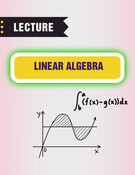

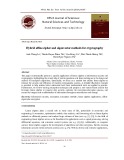
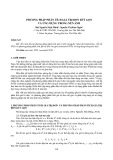
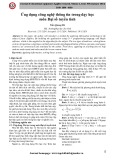
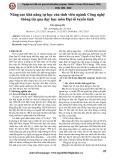
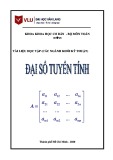

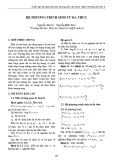
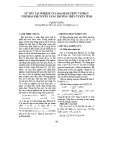










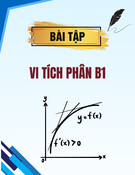



![Quyển ghi Xác suất và Thống kê [chuẩn nhất]](https://cdn.tailieu.vn/images/document/thumbnail/2025/20251030/anh26012006/135x160/68811762164229.jpg)
